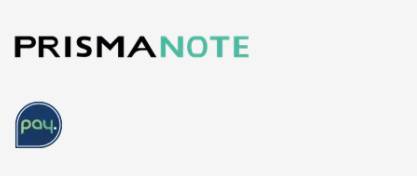Customers you don't want in the store
Monday 21 June from 9:30 am
Shop visitors that you actually don't want
Every retailer has customers in his store that you really don't want. That's crazy, because you would think that everyone who comes to buy from you is a top customer. But we're talking about counter customers here. That's the anonymous customer. This is still common among retailers.
Check it out for yourself; someone comes into the store. You have a good conversation. You give him good advice and something is bought. You give him the receipt and you say 'Thanks and see you soon!'. But is it 'goodbye'? Will that customer come back to the store to make his next purchase? Of course if you have been at the same location for 20 years, you have built up a regular customer base and people still know where to find you. But this customer is also increasingly online.
You only have to open the internet and a deluge of information will pour over you. On Social Media you can swipe for hours and read everything. It doesn't matter what topic. This is how every customer journey starts nowadays. You open the internet and look for advice and you read various reviews to find the ideal product to buy. The orientation phase is therefore also shifting further and further to online. That is why it is so important as a retailer to digitally bind the customer to the store.
For example, the next time the customer will not type 'nice diver's watch' into Google, but the name of your store. You want to realize that the customer thinks first; let me see what…. has to offer and what they know about it. So as a future-proof retailer, you also want to bind the customer to the store digitally. The basis for this is the collection of customer data.
In this article we look at how you as a retailer can easily turn 'anonymous customers' into 'real customers'. A good example is the automotive or white goods sector. There it is already very ingrained to always ask for customer data and to put the customer in the system. It is a great opportunity for other retailers to get started with this as well.
1. Start by introducing yourself
I've been to the US once. If you enter a store there, someone will quickly introduce themselves. 'Hi, how are you? My name is George'. 'Welcome to our store, my name is George'. Of course, these people get a bonus if you say their name at the checkout. However, this is also interesting for (Dutch) retailers. Introducing yourself also strengthens the customer's intention to mention their name (and leave their customer details later).
So take the first step forward to build a relationship. For example, you can easily say "My name is George, how can I help you?" or 'How can I be of service to you' or 'Nice to have you in the store'.
Of course it is equally awkward to introduce yourself. You must be thinking 'Isn't it an exaggeration?' or "Is anyone really waiting for this?" But the nice thing about a store is precisely the personal contact. So take small steps to open up more, so that the customer wants to reveal themselves more quickly.
2. Securing customer data
The next step is to save the customer data and we show that in the video above. Now take as an example that you get to the cash register. You are the first to click on the customer button.
Then the first thing you ask is 'What is your zip code?'. The postal code is information that the customer is always willing to share. Then you ask for the house number. You enter this in the second field that appears. The system then either shows the correct customer or you see the message 'no customer found' and the button 'Add customer'.
By entering the postal code and the house number, the street name and the place also appear immediately.
You can then ask for slightly more personal information. For example, "It was Stefanie, right?" If you have already introduced each other in the store. Otherwise you can also ask 'Which name can I write down?'
In addition, you can also directly click on the gender. So is there a man or a woman in front of you? Then click on this gender immediately. It is little work, but very valuable for doing marketing.
Then comes the question for the email address. It is interesting to ask whether the customer would like to receive the receipt by e-mail. This is useful for warranty and service, for example. For repairs, it is of course also useful to be able to inform the customer when the repair is ready to be picked up.
Instead of asking if the customer wants to subscribe to the newsletter, you can also ask if the customer wants to receive an update once a quarter with tips and trends. Or, for example, you can start a savings points program that allows the customer to earn a discount on his purchases.
3. One small step every day
It might be quite ambitious to put every customer in the system right away. So take small steps to eventually do a little better each week. For example, you can start by introducing yourself to 5 people today or asking if they are already a customer.
Possibly with a brainstorming session you can collect and implement the best ideas with the team to get started with collecting more customer information. Over time you will get better at it. The same goes for creating new customers. The 100th customer goes a lot faster than the first customer. Before you know it, you will automatically be clicking the right buttons.
The big advantage of creating customers is that they will eventually be in the system. So repeat customers already take much less time.






